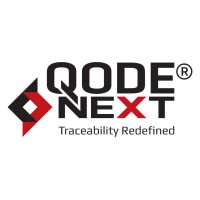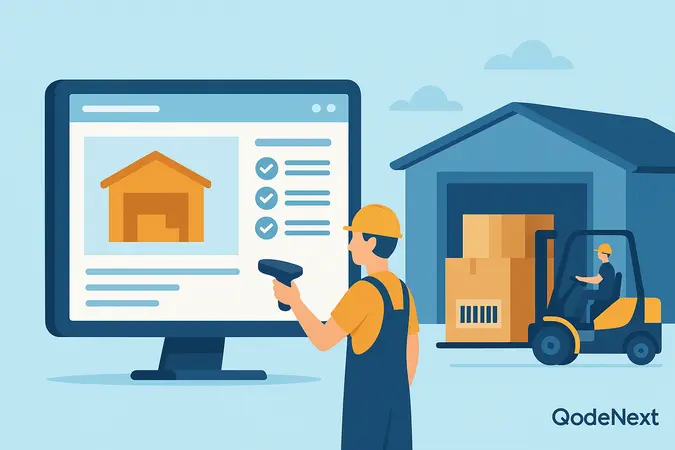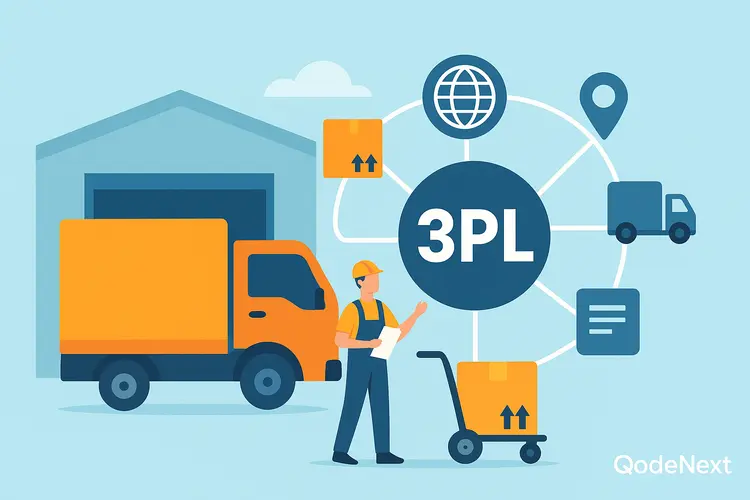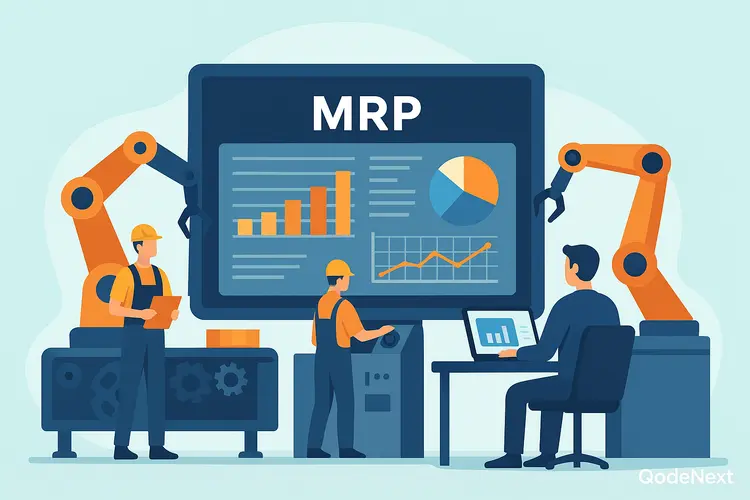In today’s global economy, businesses are under constant pressure to deliver faster, safer, and more responsibly. One critical practice that ties these goals together is supply chain traceability.
But before we dive into the how, let’s ask the fundamental question: what is supply chain traceability?
What is supply chain traceability?
At its simplest, supply chain traceability is the system and practice that lets you follow a product’s life from raw material to customer. It’s about linking real-world events to records: who packed a box, which batch a part came from, how long that pallet sat in a truck. That link between an event and a record is the difference between fumbling through emails and pulling a complete history in seconds.But before we talk tech, let’s be clear on why this matters.
Why is traceability important in the supply chain?
When people ask why traceability is important in the supply chain, the best answer is this: it buys time, reduces damage, and builds trust.
- If a batch of baby formula is suspected to be contaminated, a retailer with supply chain traceability can isolate and remove only the affected lots, rather than an entire warehouse. That’s fewer headlines, and fewer families affected.
- For consumers who care about origin, traceability lets brands tell a verifiable story, not aspirational.
- For regulators, traceability means audits stop being a frantic scramble and become a simple report.
In short: traceability turns uncertainty into actionable information.
Now that the high-level value is clear, it helps to see how traceability plays out in different industries.
Industry snapshots: pharma, food, automotive, luxury
Different industries adopt supply chain traceability for different reasons:
- Pharmaceuticals: This is where public safety and traceability collide. Supply chain traceability pharma protects public safety. Packs get unique serial numbers, cold-chain conditions are recorded, and every pill has an auditable history.
- Food: When a fresh-produce batch is suspected of contamination, traceability reduces the time-to-trace from days to hours. That protects consumers and lowers waste.
- Automotive: Modern cars have thousands of parts. Traceability helps engineers isolate exactly which serial-numbered components came from which supplier and production run when a defect appears.
- Luxury: Authentication is the battleground – luxury brands use secure tags and digital proofs so buyers can verify authenticity and provenance.
All of these are the same principle: accurate, timely answers where it matters most.
Since industries demand different things, let’s look at the building blocks that make traceability possible.
Key components and technologies
First, you need three things: identification, event capture, and a place to store and ask questions.
- Identification: barcodes, QR codes, RFID, or serialized labels.
- Event capture: scanners, IoT sensors (temperature, humidity, shock), and gateway readers at docks.
- Systems: a central platform that records the events, ties them to identifiers, and provides search and reporting.
Do this right and supply chain traceability goes from being a paper trail to a searchable intelligence layer.
Having the pieces is one thing; tying them together is another.
Why supply chain traceability software matters
A quick transition: why not spreadsheets? Because spreadsheets break when speed and concurrency matter. Supply chain traceability software centralizes records, automates compliance reports, and offers dashboards your operations managers will actually use.
It reduces human error, supports rapid recalls, and feeds analytics that spot trends (not just incidents).
In many companies, switching from manual logs to traceability software is the day the organization stops reacting and starts anticipating.
If you’re sold on software, how do you start without breaking everything?
Practical steps to implement traceability
Let’s be pragmatic. Start small:
- Map high-risk SKUs. Prioritize products whose failure is expensive or dangerous.
- Pilot one line. Add identifiers at key control points and capture events for that line only.
- Choose a platform that integrates. Make sure inventory, warehouse, and shipping systems can feed data into your traceability backbone.
- Train the people. Without clear scanning practices and owner responsibilities, data will be messy.
- Measure early wins. Track time-to-trace and supplier compliance improvements to justify expansion.
A mid-sized manufacturer I know started on a single high-value product. Within a quarter they cut recall isolation time by 70% and converted reluctant suppliers by showing them the benefits.
Once you have systems, what should you measure?
KPIs and measurement
An easy transition into metrics: choose KPIs that prove value.
- Time-to-trace: the clock from incident report to identifying affected batches.
- Tagging coverage: percent of SKUs or parts with valid identifiers.
- Data completeness: percent of events with required fields (timestamp, location, handler).
- Supplier compliance rate: percent of suppliers meeting tagging and data requirements.
Those metrics turn traceability into an ROI conversation, not a feel-good project.
Every program hits roadblocks; let’s be honest about them.
Challenges and how to overcome them
Before you get discouraged, recognize the common traps:
- Fragmented systems: Different ERPs and MESs can frustrate integration. Use middleware to bridge systems.
- Supplier resistance: Smaller suppliers may not have scanners or appetite. Start with incentives or shared pilots.
- Costs: Hardware and integration aren’t free – focus pilots on high-value SKUs to justify spending.
- Security: Traceability data reveals routes and supplier dependencies – protect it.
Address these by planning a phased rollout and focusing on the value early adopters achieve.
Technology won’t fix a bad process. So let’s switch to people.
Change management: people, process, and policy
Here’s a short reminder: systems only work if people use them.
Clear SOPs (when to scan, who fixes missing data), role-based ownership, and a small “operations champion” team make the difference.
We’ve seen hardware fail in the field while a simple accountability checklist fixed 90% of the issues the vendor blamed on “system instability.”
The discipline that supply chain traceability requires is often the biggest win.
You’re probably asking whether the money adds up. Let’s look at ROI.
Cost, ROI, and scaling
Quick reality check:
- Initial costs: tags, readers, software licenses, integration.
- Real benefits: fewer full-warehouse recalls, faster audits, lower waste, fewer customer disputes.
Many companies break even in 12–24 months when pilots are targeted. The trick: scale by value – expand to categories where traceability reduces the most risk or cost.
Let us weave in real stories and tell you how firms used traceability in the flow of operations.
Real-world examples
A retailer once needed to locate a contaminated batch of leafy greens. Before traceability, entire SKUs were pulled and stores emptied. After implementing supply chain traceability, they isolated specific lots in hours and reduced waste and PR exposure.
A small pharmaceutical maker adopted supply chain traceability pharma practices like serialization and cold-chain monitoring and found audits became a quick verification rather than months of document hunting.
A specialty coffee brand used QR codes to show customers the farm origin, and that simple transparency helped increase repeat buying.
Now that you know how it helps in practice, here are the trends to watch.
Trends shaping the future of traceability
Short step: what’s next?
- Digital twins: rehearse recalls and disruptions in a virtual replica.
- AI with curated alerts: systems that only flag anomalies that actually matter.
- Edge automation: smarter sensors that validate themselves and reduce human steps.
- Sustainability integration: traceability becomes the source for verified ESG reporting.
Expect supply chain traceability software to increasingly include sustainability and risk analytics out of the box.
Before you sign vendor contracts, do this:
Practical checklist before you start
Before you buy devices, answer these: which SKUs matter most, which suppliers must join, and what will success look like?
Those questions force you to face why is traceability important in supply chain.
If you’re in healthcare, ensure your plan covers supply chain traceability pharma details like serialization and cold-chain logs. Confirm if the platform supports traceability in supply chain audits and offers APIs for future integrations.
Also, make sure the business case shows where supply chain traceability pays back so your rollout can scale.
People love practical wins – here are some simple ones.
Human stories and everyday wins
Some of the best payoff is human: a warehouse operator who insists on scanning inbound pallets cut lost shipments by half. A procurement team that required proof-of-origin stopped 3 supplier disputes a year.
These low-tech changes rely on discipline more than the newest gadget, and they’re the kinds of changes supply chain traceability encourages.
One more theme: sustainability.
Linking traceability to sustainability
Traceability is the spine of credible sustainability claims. If you say a shirt is made from responsibly sourced cotton, someone – auditors or customers – will ask for proof.
Traceability lets you show, not just claim, how materials were grown, harvested, and processed. That’s how marketing turns into verifiable value.
Conclusion
Supply chain traceability is no longer optional.
From supply chain traceability pharma efforts that keep patients safe to cloud systems that empower grocery retailers to manage recalls in hours, traceability turns uncertainty into action.
Start small, measure what matters, and grow the capability. With consistent processes, the right people, and sensible tech, you’ll be surprised how quickly traceability becomes a source of resilience, compliance, and customer trust.
Remember, traceability in supply chain efforts compound: every tagged batch, every logged event, makes the next incident easier to resolve.
FAQs
1. Does traceability mean full transparency to customers?
Not automatically. Traceability is your internal capability; transparency is what you choose to publish.
2. Can small businesses implement traceability?
Yes – cloud, QR codes, and phased rollouts make it feasible.
3. How does traceability improve sustainability claims?
By providing verifiable records of sourcing and emissions.
4. What’s the role of traceability in supply chain planning?
It improves the quality of data used for risk modelling and mitigation.






